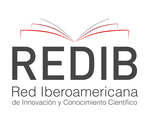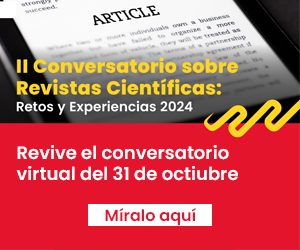Childhood life events and their relationship with post-traumatic stress disorder in adults in Metropolitan Lima.
DOI:
https://doi.org/10.20453/rnp.v84i4.4131Keywords:
Post-traumatic stress disorder, dult survivors of child adverse events, child rearingAbstract
Objectives: To determine the relationship between childhood life events and PTSD in adult population of Metropolitan Lima. Materials and methods: A secondary analysis was carried out of the Epidemiological Study of Mental Health of Metropolitan Lima 2 012, which used the instruments of a short and modified version of the Egna Minen av Bardoms Uppfostran (EMBU), a questionnaire on early adverse events, and the Mini Internacional Neuropsychiatric Interview (MINI), Spanish version. Results: Those who received a more permissive upbringing being allowed to do activities that their siblings were not, presented a statistically significant relationship with PTSD (OR 1.70, 95% CI 1.09-2.65, p = 0.019), the same as those who experienced adverse life events or were the object of or had suffered blackmail, manipulations or humiliations (OR 6.22, 95% CI 4.11-9.42, p<0.001). Conclusions: There is a relationship between permissive parenting style (“They allowed him to do things that his siblings were not allowed to do”), and the experience of childhood adverse events (“While growing up, he was subjected to (or suffered) from frequent blackmail, manipulation or humiliations)” with PTSD, in adults from Metropolitan Lima.
Downloads
References
Organización Mundial de la Salud. Clasificación internacional de enfermedades (CIE-10). Ginebra: Organización Mundial de la Salud; 1990. (Consultado el 15 de Enero del 2020). Disponible en: www.who. int/classifications/icd/en/
Sareen J. Posttraumatic stress disorder in adults: impact, comorbidity, risk factors and treatment. Can J Psychiatry. 2014; 59(9):460-7. Doi: 10.1177/070674371405900902
Kessler R, Chiu W, Demler O, et al. Prevalence, severity, and comorbidity of 12-month DSM- IV disorders in the National Comorbidity Survey Replication. Arch Gen Psychiatry. 2005; 62(6): 617– 27. Doi: 10.1001/archpsyc.62.6.617
Van Ameringen M, Mancini C, Pipe B, et al. Posttraumatic stress disorder in Canada. CNS Neuroscience & Therapeutics. 2008; 14(3): 171-81. Doi: 10.1111/j.1755-5949.2008.00049.x
Darves-Bornoz J, Alonso J, de Girolamo G, et al. Main traumatic events in Europe: PTSD in the European study of the epidemiology of mental disorders survey. J Trauma Stress. 2008; 21(5): 455– 62. doi: 10.1002/jts.20357
Norris F, Murphy A, Baker C, Perilla J, Rodriguez F, et al. Epidemiology of trauma and posttraumatic stress disorder in Mexico. J Abnormal Psychology. 2003; 112(4): 646. doi: 10.1037/0021-843x.112.4.646
Pérez C, Vicente B, Zlotnick C, Kohn R, Johnson J, et al. Estudio epidemiológico de sucesos traumáticos, trastorno de estrés post-traumático y otros trastornos psiquiátricos en una muestra representativa de Chile. Salud Ment (Mex). 2009; 32(2): 145-153. (Consultado el 15 de Enero del 2020). Disponible en: www.ncbi. nlm.nih.gov/pmc/articles/PMC2990643/
Instituto Nacional de Salud Mental. Estudio Epidemiológico de Salud Mental en Lima Metropolitana y Callao – Replicación 2012 - Informe General. Anales de Salud Mental. 2013; 29 (Suplemento1). (Consultado el 15 de Enero del 2020). Disponible en: www.insm.gob.pe/ investigacion/archivos/estudios/2012%20ASM%20 -EESM%20-LM.pdf
Instituto Nacional de Salud Mental. Estudio epidemiológico de salud mental en la selva rural 2009. Informe general. Anales de salud mental. 2012; 28 (Suplemento 2). (Consultado el 15 de Enero del 2020). Disponible en: www.insm.gob.pe/ investigacion/archivos/estudios/2009-ASM-EESM- SR.pdf
Varela E, Hensley-Maloney L. The influence of culture on anxiety in Latino youth: a review. Clin Child Fam Psychol Rev. 2009; 12: 217-33. doi: 10.1007/s10567-009-0044-5
Cairo J, Dutta S, et al. The Prevalence of Posttraumatic Stress Disorder Among Adult Earthquake Survivors in Peru. Rev Disaster Medicine and Public Health Preparedness. 2010; 4(1): 39–46. doi:10.1017/S1935789300002408
Suarez E. Two decades later: the resilience and posttraumatic response of indigenous Quechua girls and adolescents in the aftermath of the Peruvian armed conflict. Rev Child Abuse & Neglect. 2013; 23(2): 200-10. doi: 10.1016/j.chiabu.2012.09.011
Ozer E, Best S, Lipsey T,Weiss D. Predictors of posttraumatic stress disorder and symptoms in adults: A meta-analysis. Psychological Bulletin. 2003; 129(1): 52–73. doi: 10.1037/0033-2909.129.1.52
Brewin C, Andrews B, Valentine J. Meta-analysis of risk factors for posttraumatic stress disorder in trauma-exposed adults. J Consult Clin Psychol. 2000; 68(5): 748–66. doi: 10.1037/0022-006X.68.5.748
UNICEF. Definición de la infancia. UNICEF; 2005. (Consultado el 15 de febrero del 2021). Disponible en: www.unicef.org/sowc05/spanish/childhoodde fined.html
Bremner J, Southwick S, Johnson D, Yehuda R, Charney D. Childhood physical abuse and combat-related posttraumatic stress disorder in Vietnam veterans. Am J Psychiatry. 1993; 150(2): 235-9. Doi: 10.1176/ajp.150.2.235
Breslau N, Chilcoat H, Kessler R, Davis G. Previous exposure to trauma and PTSD effects of subsequent trauma: results from the Detroit area survey of trauma. Am J Psychiatry. 1999; 156(6): 902-7. Doi: 10.1176/ ajp.156.6.902
Instituto Nacional de Salud Mental. Confiabilidad y validez de los cuestionarios de salud mental de Lima y de la Selva Peruana. Anales de Salud Mental. 2009; 25(1): 1-259. (Consultado el 24 de marzo del 2020). Disponible en: www.insm.gob.pe/ojsinsm/index.php/ Revista1/article/view/97
Someya T, Uehara T, Kadowaki M, et al. Factor analysis of the EMBU scale in a large sample of Japanese volunteers. Acta Psychiatr Scand. 1999; 100(4):252-7. Doi: 10.1111/j.1600-0447.1999. tb10858.x
Lecrubier Y, Weiller E, Hergueta T, et al. Mini International Neuropsychiatric Interview - Versión en español 5.0.0. Madrid: Instituto IAP; 2000.
Sheehan DV, Lecrubier Y, Sheehan KH, et al. The Mini-International Neuropsychiatric Interview (M.I.N.I.): The Development and Validation of a Structured Diagnostic Psychiatric Interview for DSM-IV and ICD-10. J Clin Psychiatry. 1998; 59(20): 22-33.
Instituto Nacional de Salud Mental. Estudio Epidemiológico Metropolitano en Salud Mental - 2002 - Informe General. Anales de Salud Mental. 2002; 18 (Suplemento 1 y 2). (Consultado el 24 de marzo del 2020). Disponible en: www.insm.gob.pe/ investigacion/archivos/estudios/2002-ASM- EESM-M/files/res/downloads/book.pdf
Feres JC, Macero X. Enfoques para la medición de la pobreza: Breve revisión de la literatura. Santiago de Chile: UN; 2001. (Consultado el 24 de marzo del 2020). Disponible en: www.researchgate. net/publication/239928852_Enfoques_para_la_ medicion_de_la_pobreza_Breve_revision_de_la_ literatura
Instituto Nacional de Estadística e Informática. Principales resultados de la Encuesta Nacional de Hogares sobre Condiciones de Vida y Pobreza (ENAHO) - IV Trimestre 2001. Lima: Instituto Nacional de Estadística e Informática; 2002. (Consultado el 24 de marzo del 2020). Disponible en: www.inei.gob.pe/media/MenuRecursivo/ boletines/4346.pdf
Darling N, Steinberg L. Parenting style as context: An integrative model. Psychol.Bull. 1993; 113(3):487-96. doi: 10.1037/0033-2909.113.3.487
Salirrosas C, Saavedra J. Percepción de algunos estilos de crianza y el episodio depresivo en el adulto. Rev Neuropsiquiatr. 2014; 77(3):160-7. Doi: 10.20453/rnp.v77i3.2030.
Lester S, Lorenc T, Sutcliffe K, et al. What helps to support people affected by Adverse Childhood Experiences? A Review of Evidence. London: EPPI- Centre; 2019. (Consultado el 24 de marzo del 2020). Disponible en: eppi.ioe.ac.uk/CMS/Portals/0/ACEs_ report-041119_1.pdf
Rudenstine S, Cohen G. Eventos adversos de la infancia y el riesgo de depresión de nuevo inicio y trastorno de estrés postraumático entre los soldados de la Guardia Nacional de EE. UU. Rev Medicina militar. 2015; 180(9): 972-8. Doi:10.7205/ MILMED-D-14-00626
Bishop M, Rosenstein D. An analysis of early developmental trauma in social anxiety disorder and posttraumatic stress disorder. Ann Gen Psychiatry. 2014; 13(16): 1-14. Doi:10.1186/1744-859X-13-16
Osofsky J. The impact of violence on children. Rev The future of children. 1999; 9(3): 33-49. Doi: 10.2307/1602780
Yap M, Pilkington P, Ryan S, Jorm A. Parental factors associated with depression and anxiety in young people: A systematic review and meta-analysis. J. Affect. Disord. 2014; 156:8-23. Doi: 10.1016/j. jad.2013.11.007
Boelen oelSpuij puiReijntjes eijntjes.jad.2013.11.007rg/10.1016/j.jad.2013.11.007» t «_ blank» g people: A systematic rePsychiatry Res. 2017; 258:518-24. Doi: 10.1016/j.psychres. 2017.09.002
Suelen de Lima B, Acosta M, et al. Suicide risk and childhood trauma in individuals diagnosed with posttraumatic stress disorder. Rev Tendencias Psiquiatría Psicoterapeuta. 2018. 40(3): 253-7. doi: 10.1590/2237-6089-2017-0101
Astin M, Ogland-Hand S, Coleman E, et al. Posttraumatic stress disorder and childhood abuse in battered women: Comparisons with maritally distressed women. J Consult Clin Psychol. 1995; 63(2): 308–12. doi: 10.1037/0022-006X.63.2.308
Copeland W, Keeler G, Anglod A, Costello E. Traumatic events and posttraumatic stress in childhood. Arch Gen Psychiatry. 2007; 64(5): 577– 84. Doi:10.1001/archpsyc.64.5.577















 RNP is distributed under a
RNP is distributed under a 